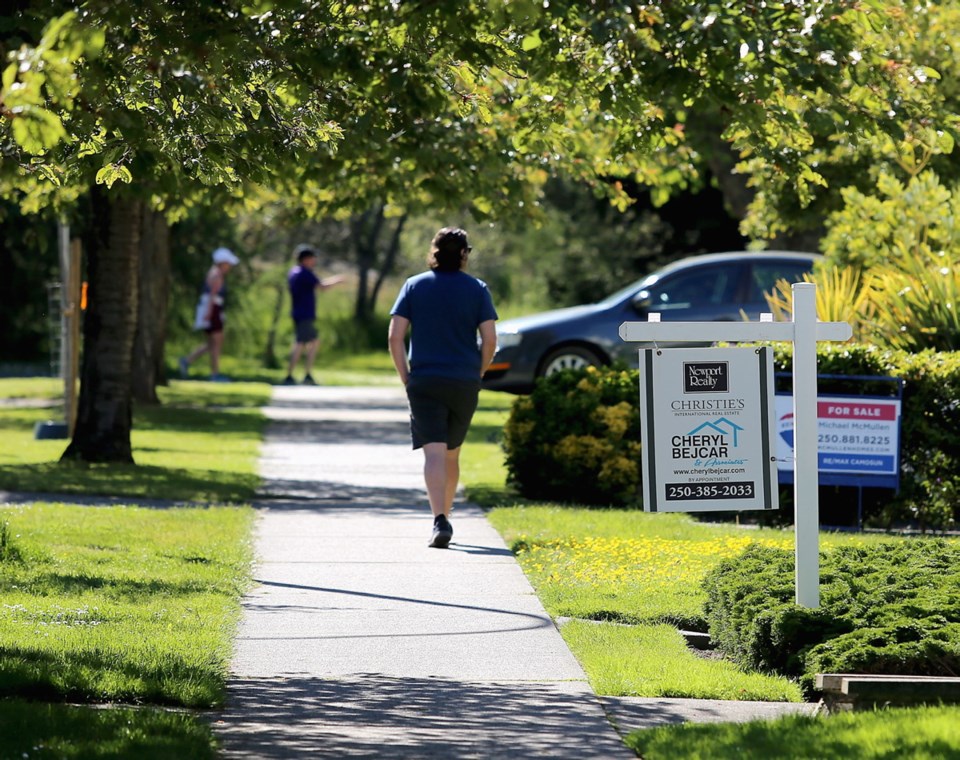The second phase of the province’s economic restart will look and feel a lot like the first for the real estate market according to the experts.
While the province starts getting back to work and small businesses start to reopen with new safety protocols, the real estate market, which has been operating through the pandemic, will continue to buy and sell properties with more virtual home tours, online open houses and the signing of electronic contracts.
“I don’t think we are going to see any huge change over the next few months or so, [real estate agents] will still be using technology a lot more and still use the safety protocols we have been using to show properties,” said Sandi-Jo Ayers, president of the Victoria Real Estate Board. “These days, we are doing as much as we can online with our buyers and sellers.”
Real estate was deemed an essential service early in the pandemic and continued to operate with strict safety guidelines.
That resulted in the shut down of open houses in favour of streaming house tours online and virtual open houses.
The next phase of economic reopening will not change that, though there are guidelines to allow for physical tours of properties.
With governments lifting restrictions for some businesses, there will be a change in public confidence that could translate into business, she said. “There may be more people now willing to start buying and selling. There’s lots of pent-up demand among both buyers and sellers.
“It won’t be a flood, but there could be a large trickle of business.”
That will be welcome after a tough April for real estate. There were 287 properties sold in the region in April, a 59% drop from last year’s 696 sales.
The commercial and industrial side of the business is also not expecting to see much change as Phase 2 begins.
Ty Whittaker, executive vice-president with Colliers International Victoria, said the biggest difference doing business during the pandemic has been communication. “There have been a lot more Zoom meetings taking place and a lot of different formats of communicating.”
There wasn’t much difference in the way the market worked, though property tours were conducted with safety in mind and being cautious and respectful of other people’s space.
“But I found that in dealing with business people they were a bit more pragmatic and keen to get back to normal and get people working again,” he said. “They didn’t seem to be as fearful.”
That may be reflected in the industrial side of commercial real estate, which Whittaker said remained steady in the first quarter of 2020.
Colliers’ most recent industrial report showed through the first quarter of this year vacancy remained low at 0.8% versus 0.7% in the fourth quarter of last year, and lease rates increased by an average of 15.4% since the first quarter of 2019.
Whittaker said there were only a handful of industrial tenants that asked for rent assistance from landlords through the first quarter, while a significant number of retail tenants requested help in that time.
“On the retail side of things we hear from landlords that as many as 30% of retailers may not be able to switch the lights back on,” he said.
The same is unlikely to hold true with office space. Whittaker said when nearly 50% of all office space is leased to government, there is a strong amount of stability built into the market.



